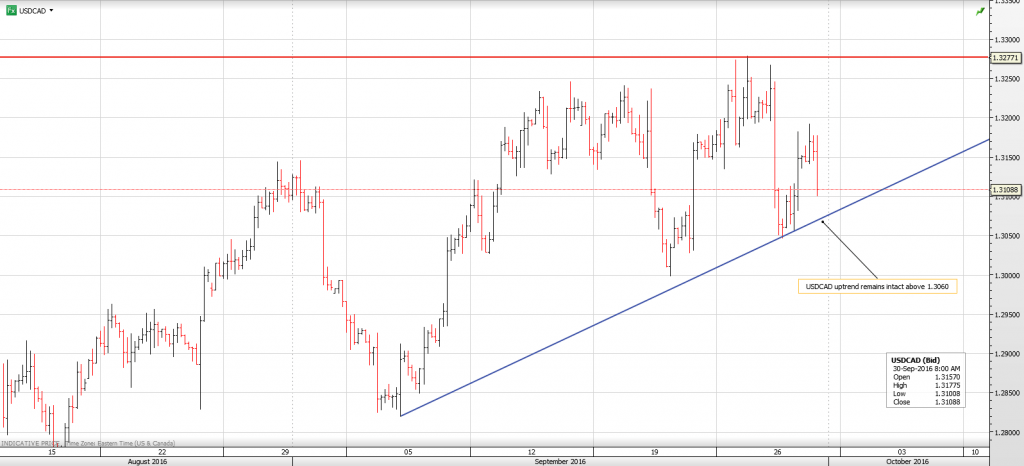Overnight Range 1.3104-1.3192
USDCAD dropped from 1.3177 to 1.3104 on news that Canada’s July GDP rose 0.5% surpassing the 0.3% forecast and helped by the increase in oil production. The enthusiasm was tempered somewhat by declines in both the Industrial Product Price Index and Raw Material Price Index. The GDP report supports the Bank of Canada’s view of a rebound in Q3 growth.
The US data was in line with expectations.
Overnight, it was a different story. The Canadian dollar was an after-thought, drifting sideways in a fairly narrow 0.0050-point range.
That wasn’t the case for the Australian or New Zealand dollars. AUDUSD declined steadily while NZDUSD rode a roller-coaster. Month-end and quarter-end portfolio rebalancing flows may be behind part of the moves. USDJPY spiked to 101.75 from 100.90 in early Asia trading but that move was revered early in the European session.
FX markets were very active in Europe. GBPUSD remained below 1.3000 despite slightly better than expected data. EURUSD remained true to form and traded in a tight band. The single currency is under duress due to on-going concerns about Deutsche Bank. Eurozone data releases, including CPI and German Retain Sales didn’t have much if any impact on trading.
Oil prices declined steadily overnight due to a mix of profit taking and a bit of skepticism over the Opec deal, with WTI reaching a low of $47.00. That move didn’t last and WTI is just below $48.00/b.
The usual month end rebalancing flows may lead to additional USDCAD selling
USDCAD technical outlook.
The intraday USDCAD technicals are bullish while trading above 1.3060 supported by the break above resistance at 1.3120 which keeps the focus on a retest of the 1.3280 area. A break below 1.3060 argues for a revisit to support in the 1.2980-1.3000 area. For today, USDCAD support is at 1.3090 and 1.3060. Resistance is at 1.3200, 1.3240 and 1.3280
Today’s Range 1.3080-1.3180






